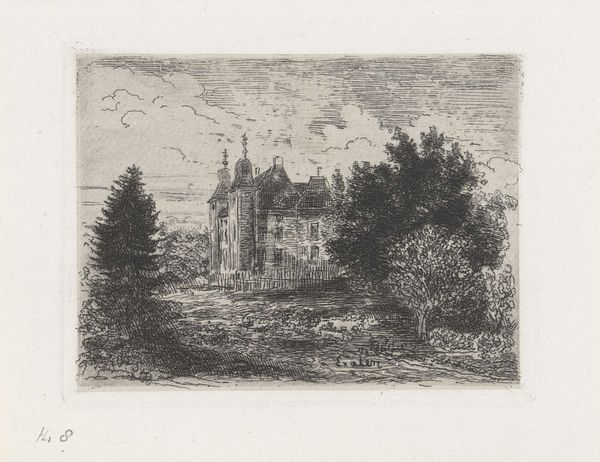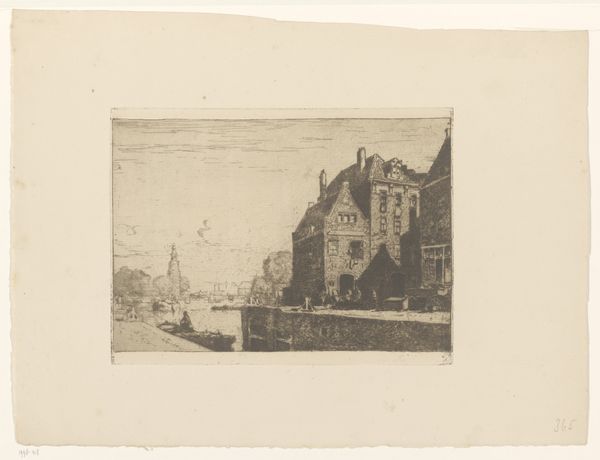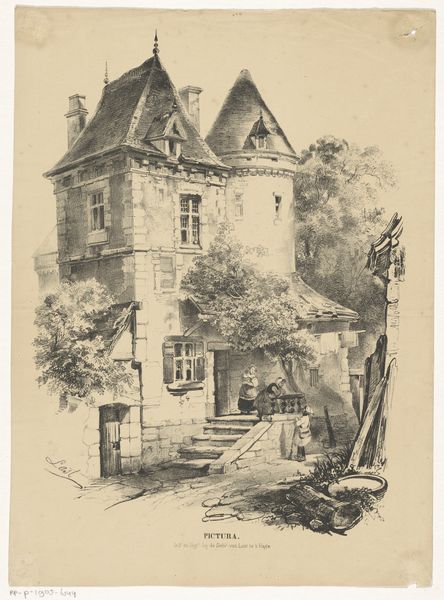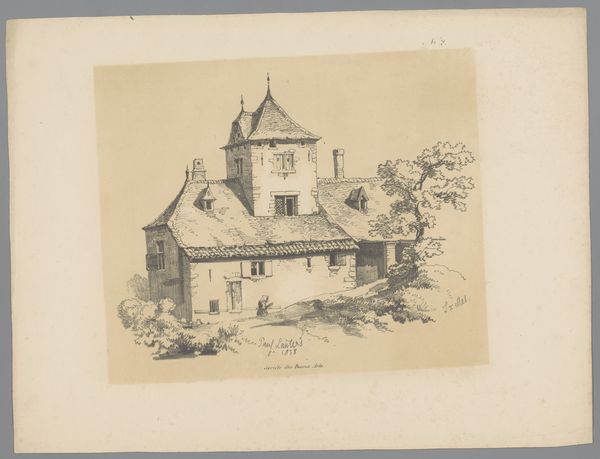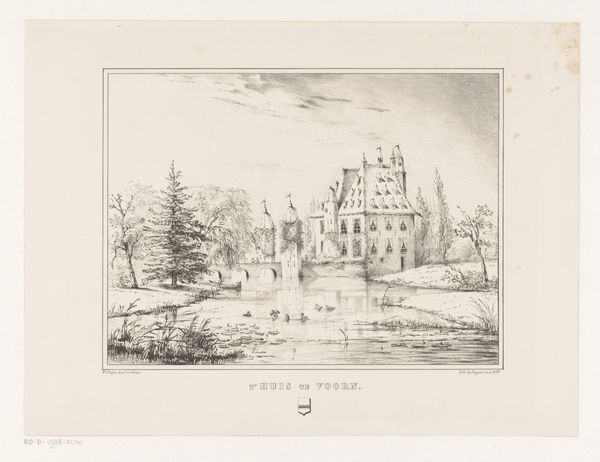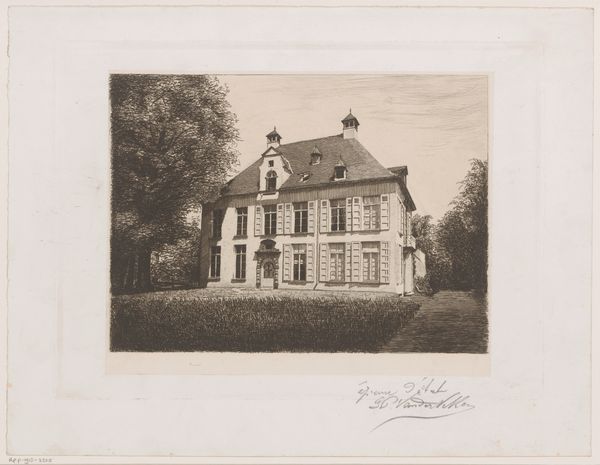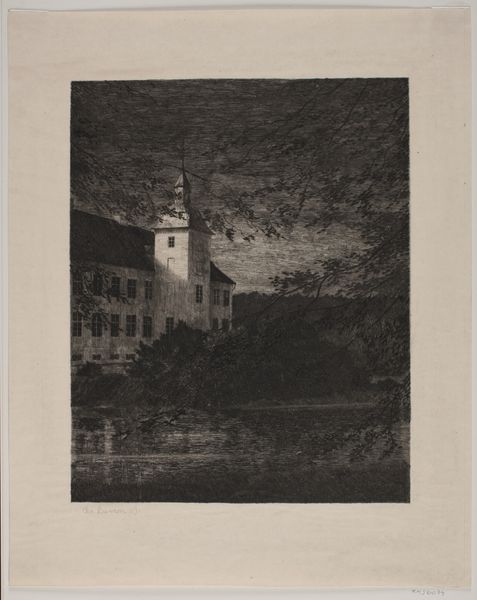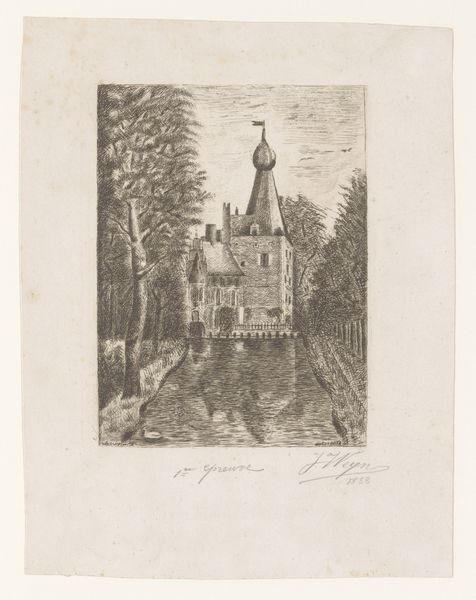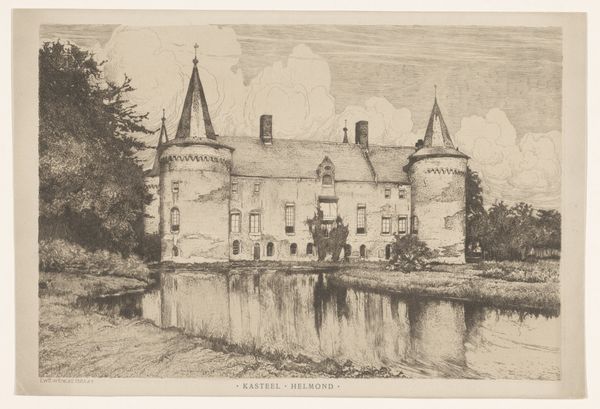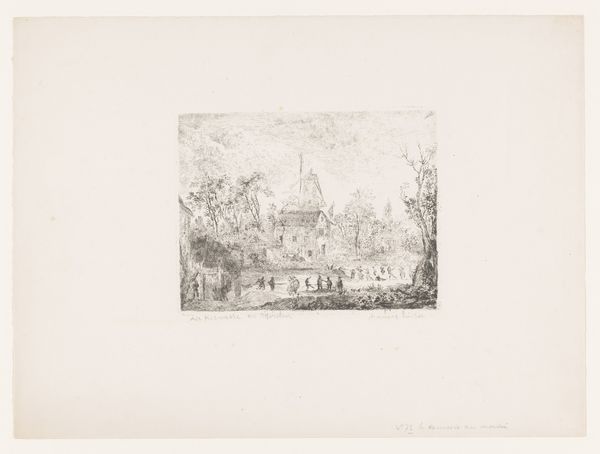
Dimensions: height 140 mm, width 191 mm
Copyright: Rijks Museum: Open Domain
This is ‘Huis Rooswijk’, an etching made by Barthold Willem Floris van Riemsdijk in 1916. Etching involves using acid to cut into a metal plate, which is then inked and printed. In Riemsdijk’s time, this was a well-established medium, deeply intertwined with the rise of capitalism. Etchings could be reproduced in multiples, making art accessible to a wider audience. Notice how the fine, precise lines of the etching capture the architecture and surrounding landscape. The texture of the trees, the reflections in the water, and the details of the building are all meticulously rendered. This attention to detail speaks to the artist's skill and the labor involved in creating the image. The process is labor intensive and demanding. Ultimately, understanding the materials and methods used in 'Huis Rooswijk' allows us to appreciate the skill and effort involved in its creation, and to reflect on the relationship between art, labor, and society.
Comments
No comments
Be the first to comment and join the conversation on the ultimate creative platform.
